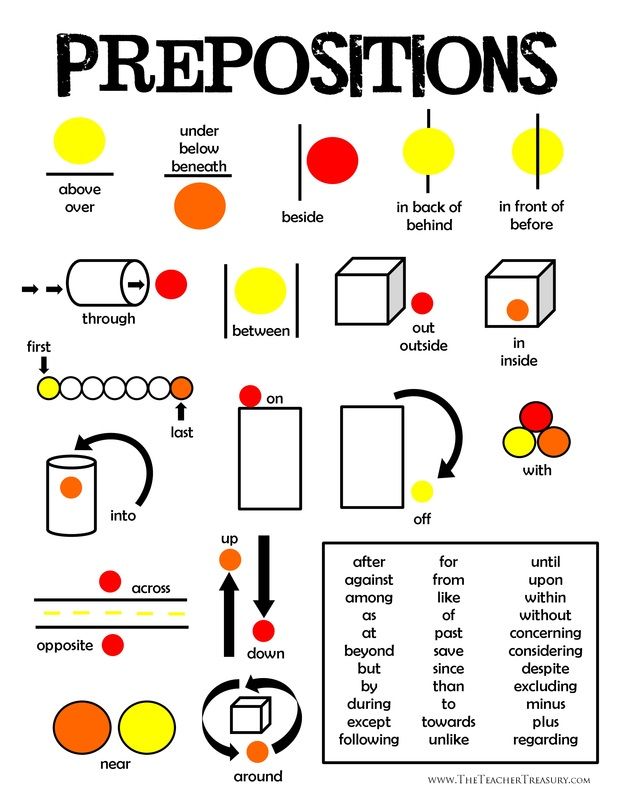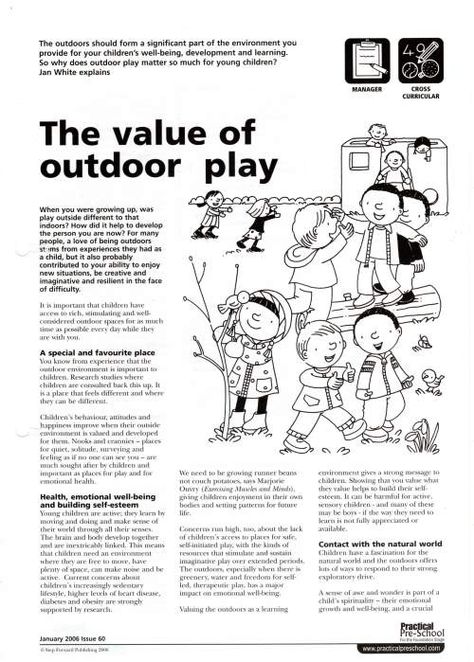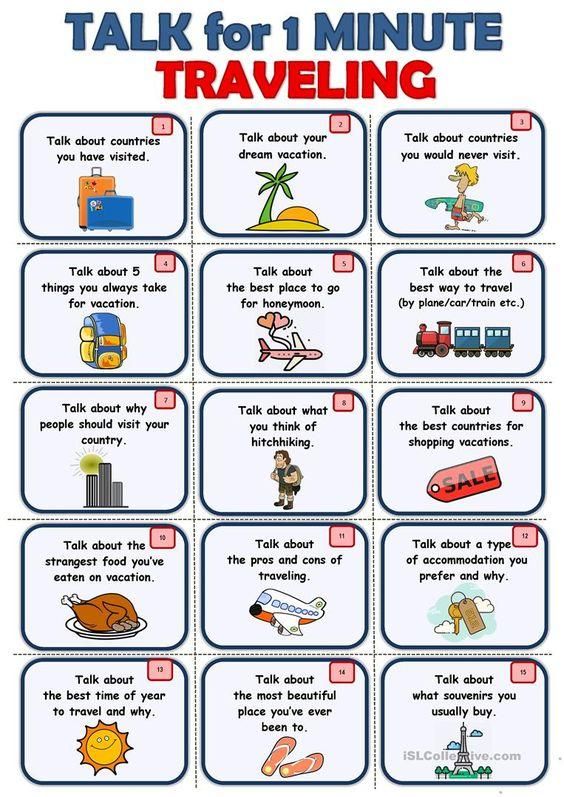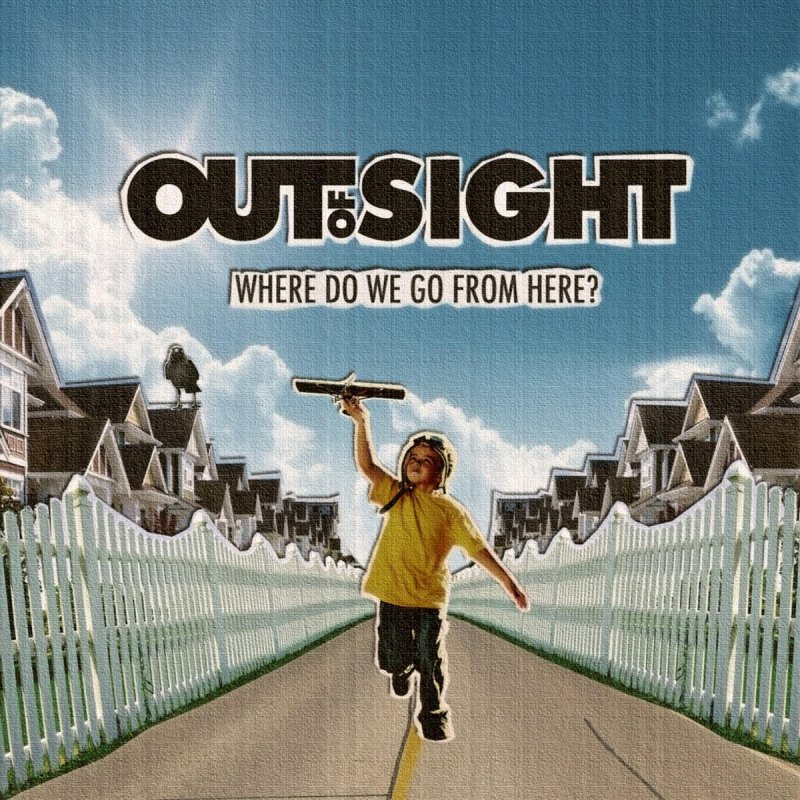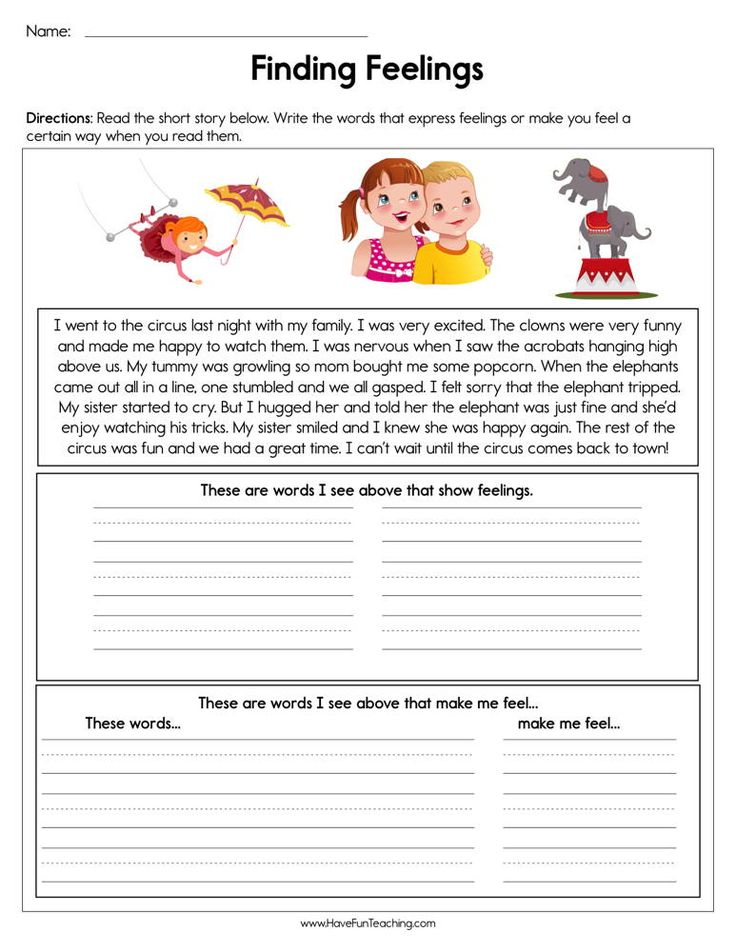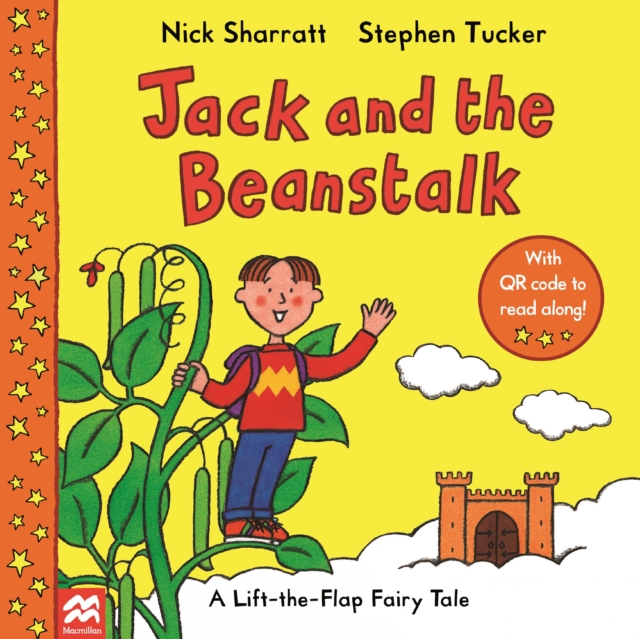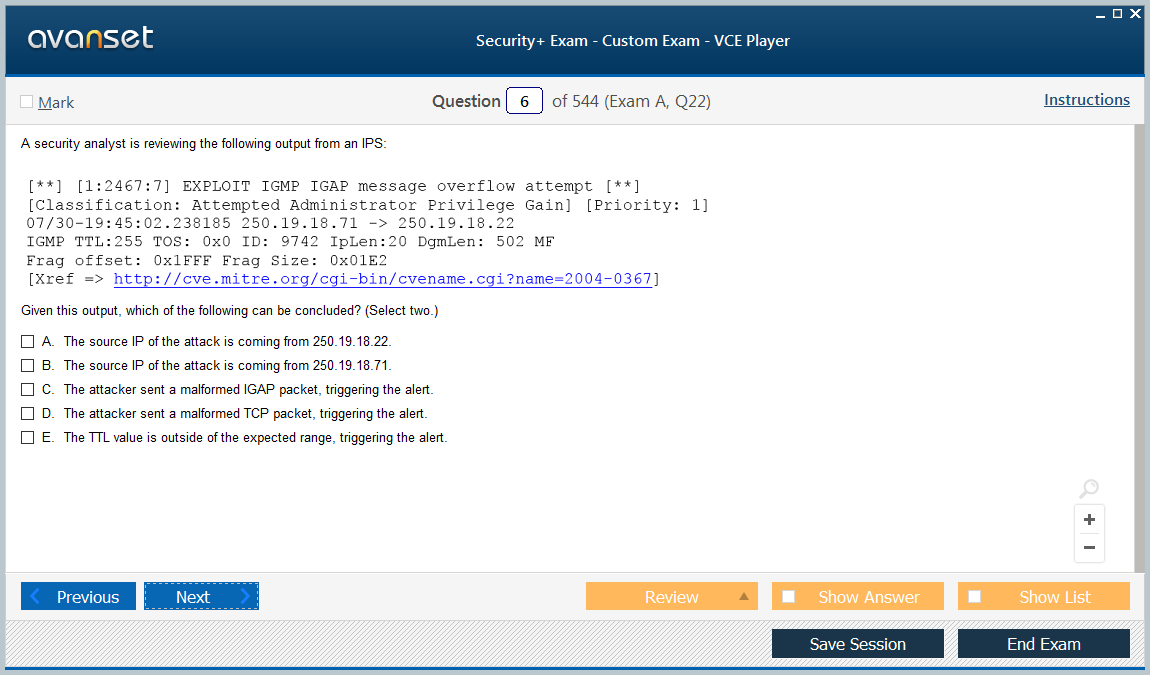Learning the alphabet for toddlers
Learning the Alphabet: Best Activities for the ABCs
What’s the best way for kids to learn the alphabet?PLAY. OF COURSE! As much as we might think adults need to have a big hand and push into kids learning the alphabet, that’s just not always the case: Kids learn the alphabet when they play with it.
No stressing needed in the early years.
RELATED: Looking for a year’s worth of learning all done for you? Check out Playing Preschool.
How do you help your child learn the alphabet?By letting them play with it. Kids need exposure to it – the same way they have exposure to animals, dolls, cars, trucks, numbers, and blocks.
The truth is: memorizing letter names is just that, memorizing. While it may seem super fancy, memorizing letter names is no different than memorizing dinosaur names, color words, princesses, and Paw Patrol characters.
It’s memorizing the name of a symbol.
The difference is, parents have been told that memorizing the ABCs is the key to learning success. That’s just not true.
Learning in the early years shouldn’t be relegated to just memorizing. The early years is for learning to problem solve, communicate, critical think, to ask question, to take risks, to develop life long skills… and they develop all these through PLAY.
It all comes back to PLAY.
Learning the alphabet is no different than learning animals namesOur children see animals everywhere, and we encourage them to learn names and sounds as they do.
“That’s a cow. It says mooooo.”
Letters are no different. We are asking a child to memorize the name and the sound it makes.
“That’s an M. It says mmmmm.”
We don’t build up animal names. We don’t worry about animal names. We don’t buy flashcards to help memorize names and sounds faster.
But we do with letters.
We don’t need to.
Expose your child to letters as they play – as they’re interestedJust like we don’t push animals, or construction trucks, or dinosaur names on little kids if they aren’t interested… follow the same rule with letters.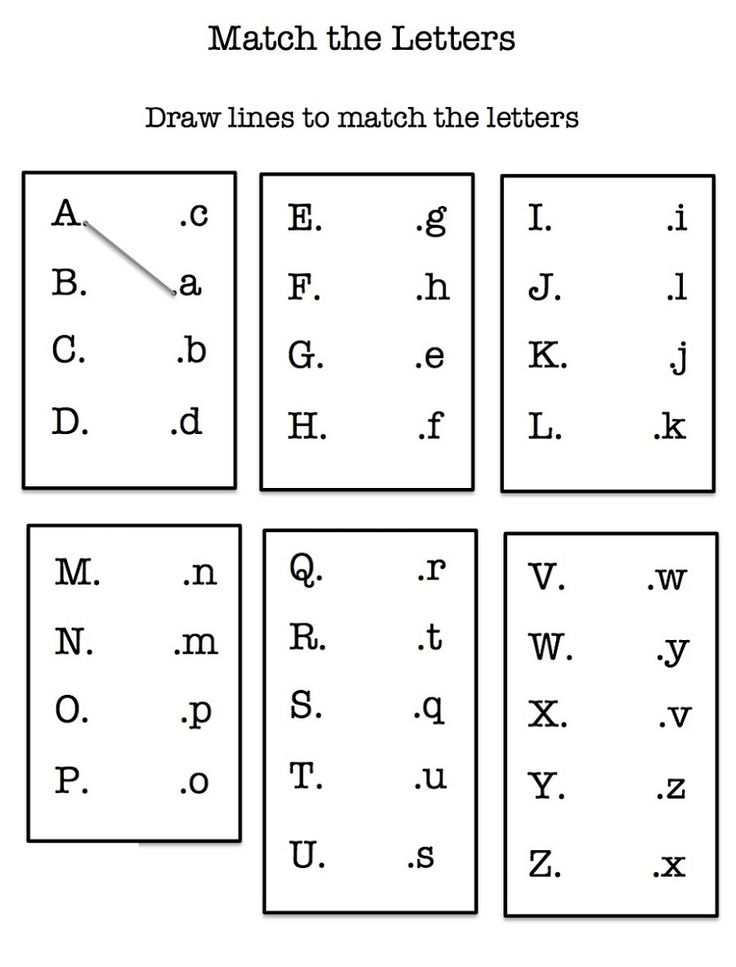
But if you DO HAVE A CHILD INTERESTED IN LETTERS, play with them. Answer questions. Be casual. Be cool. It’ll happen.
Remember, kids are expected to learn the alphabet IN KINDERGARTEN (that’s what the Common Core State Standards say).
Amazing activity to help your child PLAY with the alphabetHere’s some of our greatest hits from through the years that helped my kids learn their letters bit by bit.
Nothing fancy. Just play and fun, light and breezy.
Alphabet Scoop and TransferA combination literacy + sensory + life skills activity that can’t be beat. A good set of alphabet magnets (like the ones here) are a must!
Alphabet Match-upIdentifying capital letters and their small letter counterparts is a big deal… but it’s also similar to kids recognizing several breeds of bears or that Great Danes and Poodles are both dogs.
It’s another skill that grows over time.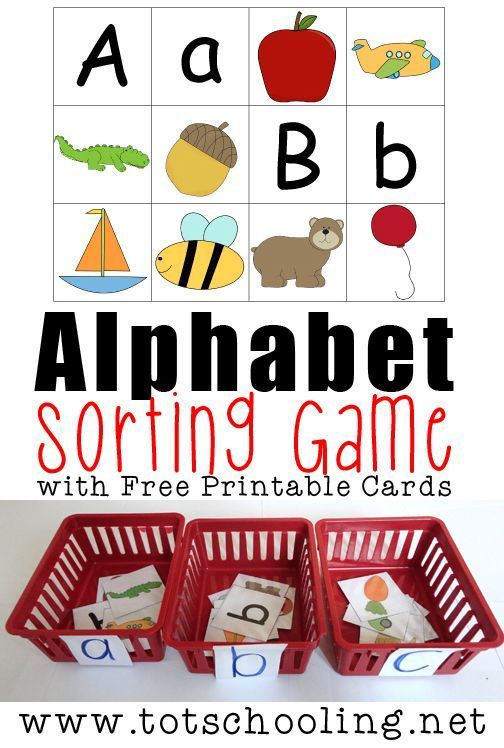
A little art + letter recognition here, and this activity uses alphabet magnets too. They’re an important toy/supply to keep on hand!
ABC Puzzle BinThe tag line is right here: all these supplies came from the Dollar Store! The Dollar Store is a GREAT place to find activity supplies.
ABC & Color SortI spy alphabet magnets again!!! This is a FUN activity for littles – because it’s a color sorting activity that uses alphabet pieces as the materials. My son (in this photo) didn’t know his ABCs yet, but he had a ball playing with them.
Post-It MatchAlways a favorite! This is a MATCHING activity – and my daughter had a ball trying to put her letters back in alphabetical order.
ABC TubeGrab your toilet tube collection and your dot stickers. This is a great (and portable!) activity for kids.
Alphabet FindA classic here.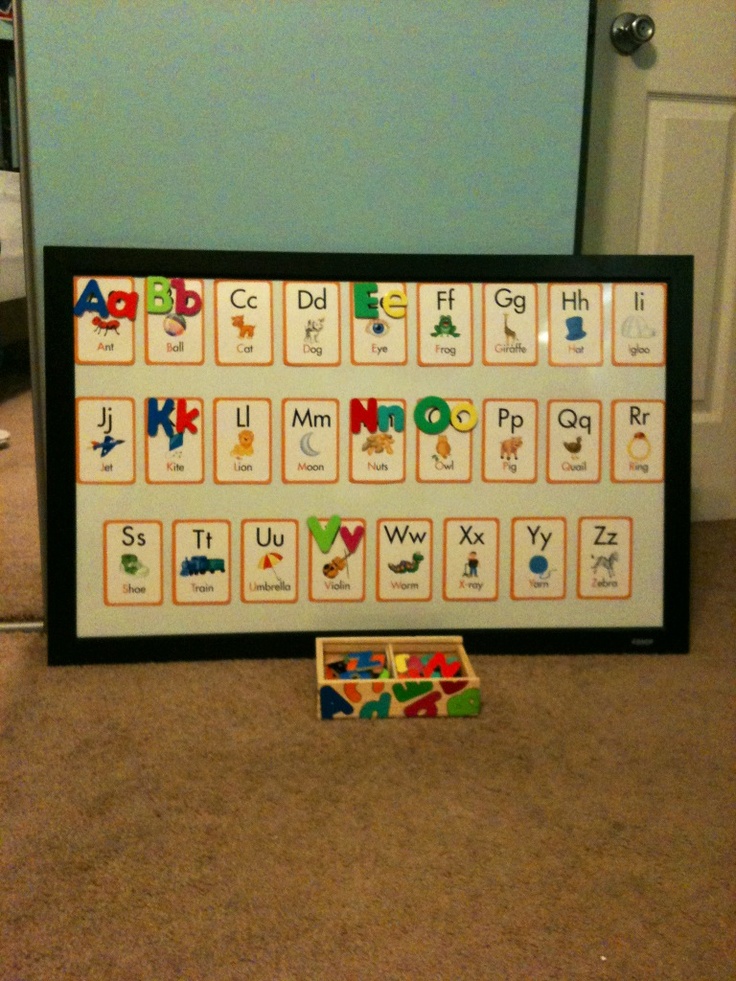 This has been on repeat since 2016 and we play it ALL THE TIME. It’s part letters, part gross motor, and one of the greatest “sittervising” activities of my life.
This has been on repeat since 2016 and we play it ALL THE TIME. It’s part letters, part gross motor, and one of the greatest “sittervising” activities of my life.
An activity that focuses on “tricky letters.” This activity is for all those letters that look different in capital vs lower case form. Ss and Cc are easy letters. Ee and Gg? Tricky letters.
Alphabet MatchHello to one of my favorite activities and favorite TRICKS. Yes, that sharpie really does come off. And everyone say hi to my alphabet magnets yet again…
Erase the ABCsI can still remember the first time we did this! Feels like yesterday so you know that makes me feel OLD. It’s a classic for a reason… and the reason I got so many dinners made with 3 under 4.
Puzzle UnwrapLook at this cutie unwrapping his puzzle pieces. What kid doesn’t love opening a present? 26 alphabet puzzle pieces is one mighty fine way to play with the ABCs.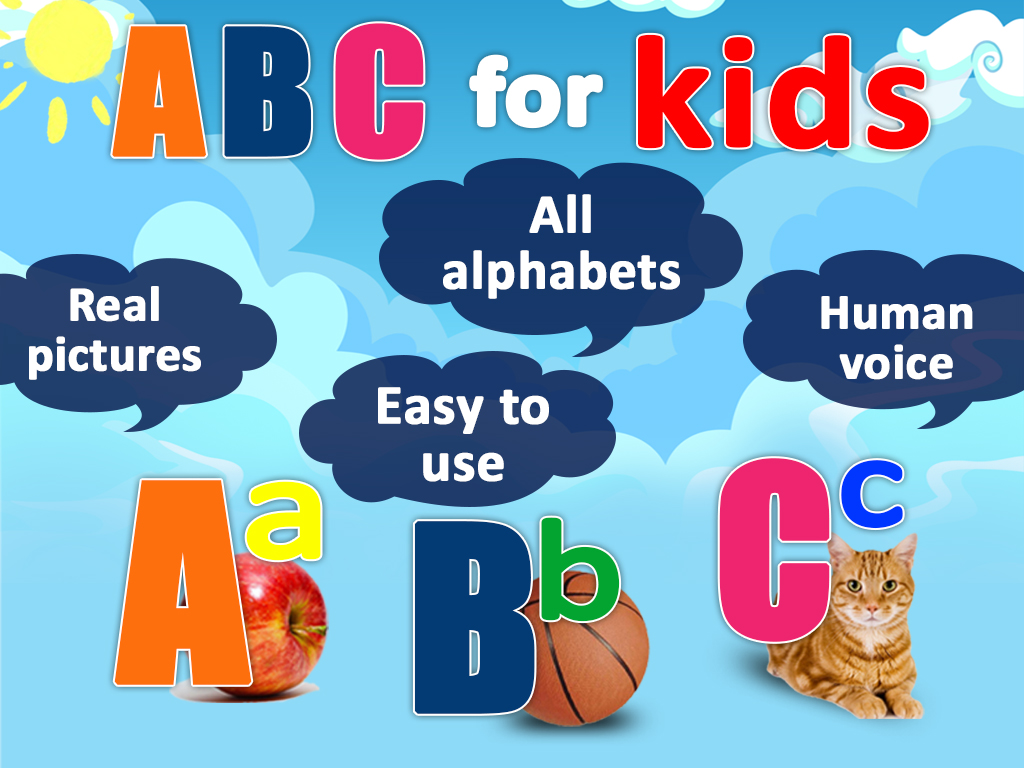
Featuring one of my favorite alphabet toys: the foam bath letters. Not just for the bath, and totally awesome to play with. We still have a set of these!
Above all else, remember: learning the letters is about exposure NOT drillingYou don’t need to drill the alphabet.
You don’t need to stress about the alphabet.
Have some alphabet toys and have some fun… and keep remember: they learned their animal names and sounds just fine. This will happen too.
How To Teach Toddlers The Alphabet (9 Effective Ways)
Teaching the alphabet is one of the first things that you will teach your child!
It’s essential to know the alphabet, so toddlers/preschoolers can start recognizing letters and learning phonetics.
But teaching your kids the alphabet can be incredibly frustrating!
Trust me; I know first hand how challenging it can be! But I promise if you stick with it and work with your toddler every day, you will see progress! Below you will see a video of my son working on his skills!
Today, I’m sharing 9 ways to help teach the alphabet to your toddler!
#1. Play With Alphabet Toys
Did you know that there are FOUR ways that people learn? (Visual, auditory, reading/writing, and kinesthetic)
When children are exposed to alphabet toys like puzzles, magnetic letters, or foam letters, it is an excellent opportunity to begin teaching them.
Children can look at the letters, hear you say the name of the letter, and physically touch them, which almost hits all of the ways that we learn best (reading and writing will come at a later date for these kiddos).
I have used a variety of different alphabet toys with my kids to help them learn their letters at such a young age.
Here are FIVE alphabet toys that I recommend.
A. Melissa and Doug See-Inside Alphabet Puzzle
I can honestly say that my son learned his ABC’s with this puzzle!
At the time this short video was taken, he was 16 months old. Below you will find a video of how you can play with this toy to help your toddler learn!
Check Price - Amazon
B. Melissa and Doug Alphabet Sound Puzzle
Do you have time to sit and play with your toddler all day?
Most likely, the answer is no, we all wish we could, but dishes need washing and laundry needs folded.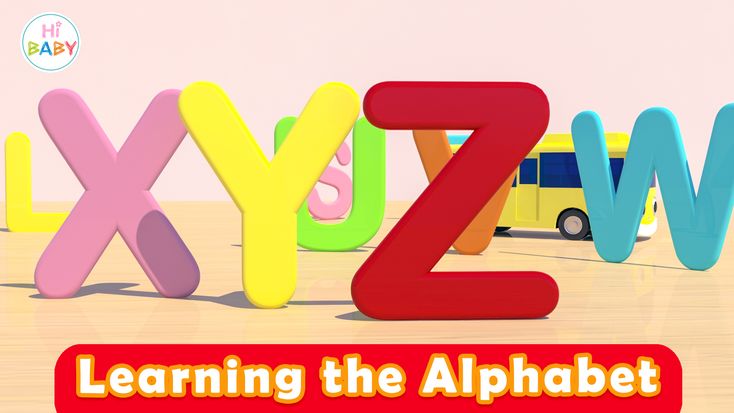 This puzzle is fantastic because not only does it have the letters but it also makes the phonetic sound for each of the letters!
This puzzle is fantastic because not only does it have the letters but it also makes the phonetic sound for each of the letters!
Check Price - Amazon
They can still be learning even when you are not right next to them!
It’s suitable for toddlers and preschoolers so they can start connecting the sounds that each letter makes.
C. Sesame Street Elmo’s On the Go Letters
Who doesn’t love Elmo?
Check Price - Amazon
This alphabet toy has the letters that children can manipulate and also includes some of their favorite Sesame Street characters inside once they lift the letter!
*TIP* It is a little harder for younger ones to try to get the letters in and out, so you may need to be there to help them with this toy until they can pull them out themselves.
D. LeapFrog Fridge Phonics Magnetic Letter Set
My husband collects magnets from everywhere we travel, and our kids can’t get enough of pulling them off of the refrigerator!
That’s why I knew this toy was going to be a hit for both my kids!
These magnets can stick to the refrigerator, which is fun and engaging for toddlers.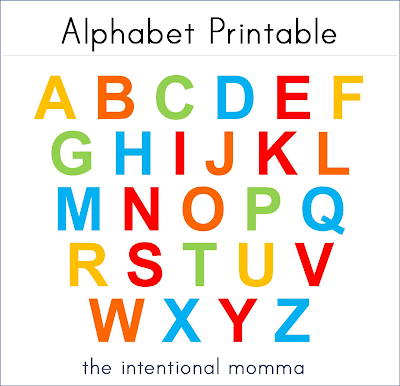 It comes with a magnetic bus that kids can press the letter into, and it tells them what letter it is and the sound it makes.
It comes with a magnetic bus that kids can press the letter into, and it tells them what letter it is and the sound it makes.
It also says words that begin with each letter and uses the word in a sentence, which is great for preschoolers or kindergartners, which makes this toy worthwhile since it can be used for a couple of years!
Check Price - Amazon
E. Leapfrog My Own LeapTop
My FAVORITE on the go toy! I had to get two because both my kids wanted their own.
I keep both of them in the car because it’s a fun toy for them to play with for a few minutes while we are in the car, and they get to be learning at the same time!
There are four functions on the computer for kids to interact with (letters, messages, animal games, and music). You can also personalize the computer by adding your child’s name in it!
Check Price - Amazon
#2. Repetition is Key!
Remember that time when you told your toddler something once, and they remembered it correctly, and you never had to say it to them again?
Yeah, me neither.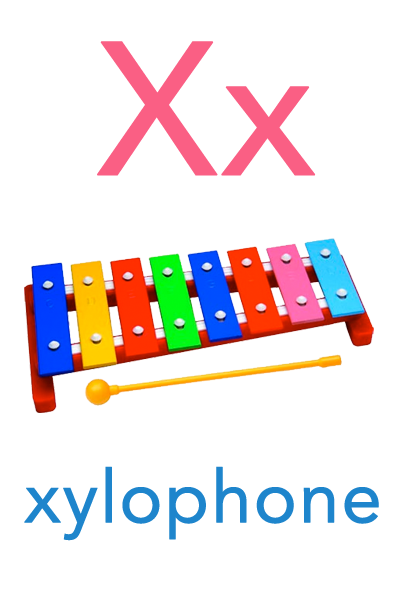
When you are trying to teach anyone something new, especially toddlers, repeating the information is crucial. Even though my son knows the alphabet, I still spend at least 10 minutes a day going over it with him, so he remembers the information.
It is engaging for your kids also to present the alphabet in different ways, so they don’t get bored with the same toy, which I will explain in the next section.
#3. Alphabet Learning Activities
There are so many creative and fun ways to help a child learn the alphabet!
Does your child love blocks? Try writing the letters of the alphabet on the Mega Bloks to get them interested in learning them. Use a dry-erase marker, and it comes right off with a baby wipe!
Does the child enjoy painting? Paint letters on a piece of paper and ask the child which letter is which.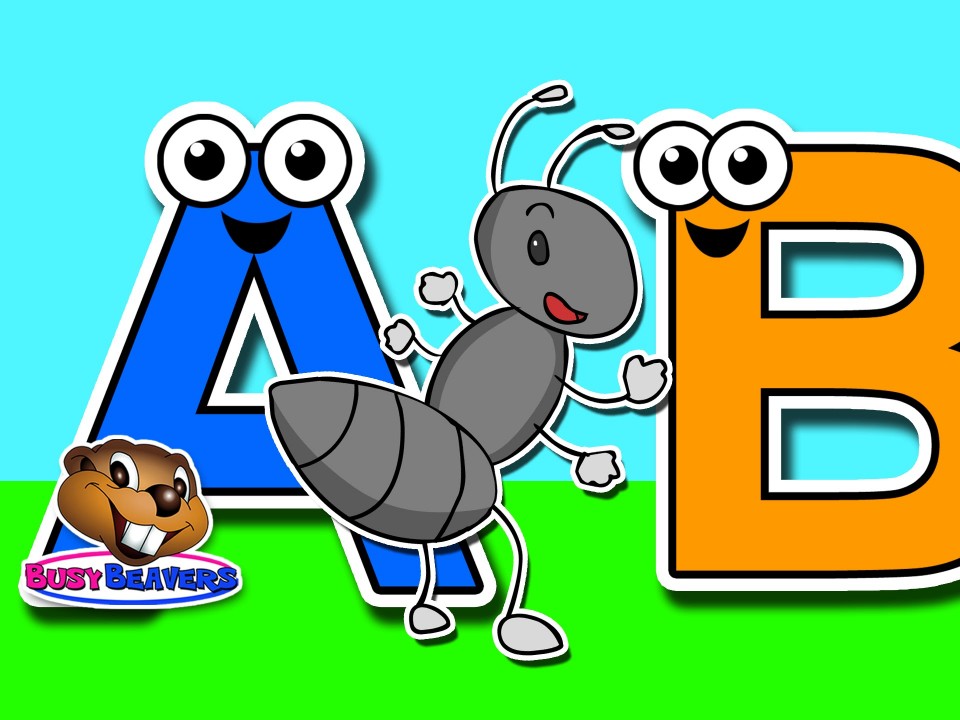
Does the child like to play in the bathtub? Get foam letters that are made to go in the tub and review the letters when it’s bath time!
No matter what the child enjoys, you can use their interests as an opportunity to help them learn.
I have an article that lists 21 PERFECT Alphabet Activities For Preschoolers, check out this article to learn about more activities that you can do!
In the meantime, here are THREE easy activities you can use today!
A. Post-It Letter Activity
I think it’s easiest to do activities with supplies that you already have at home!
Write down an upper/lower case letter on each post-it note. Mix up the letters and ask your child to find a letter. Or, if they are really excited about pulling the post-it notes off the wall, when they pull them off, ask them what letter they have in their hands!
B.
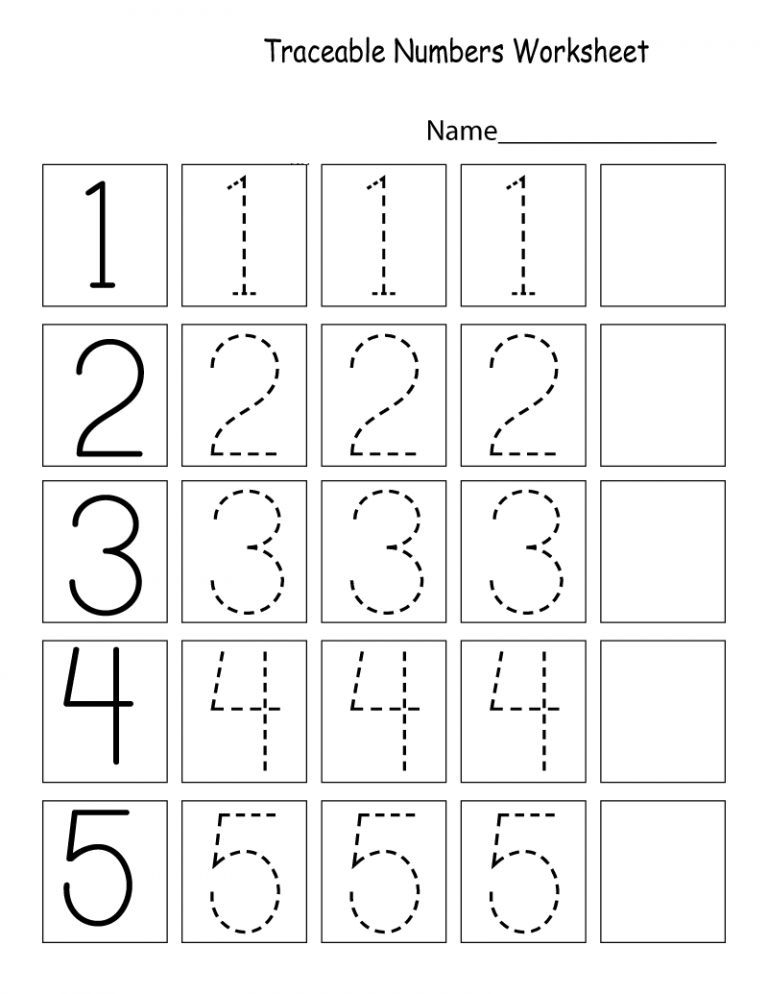 Do-A-Dot Painters
Do-A-Dot Painters
Who doesn’t love paint that doesn’t cause a mess?
Do-A-Dot Painters are so much fun, and the clean-up is so much easier than traditional painting.
All you need to do this activity is Do-A-Dot Painters and my FREE Do-A-Dot Letters
How to help your kids learn with this activity:
1. For early learners, identify the letter to them. Have them try to look around the worksheet to see if they can see at least one or two matches to the letter you are working on. If they are struggling to use the Do-A-Dot painter on their own, try to help them by having them hold your hand while you both do it!
2. Older children should try to do this activity on their own. Ask them what letter it is that you are focusing on and have them try to use the Do-A-Dot painters on their own to see how many they can match correctly.
View Amazons Price
C.
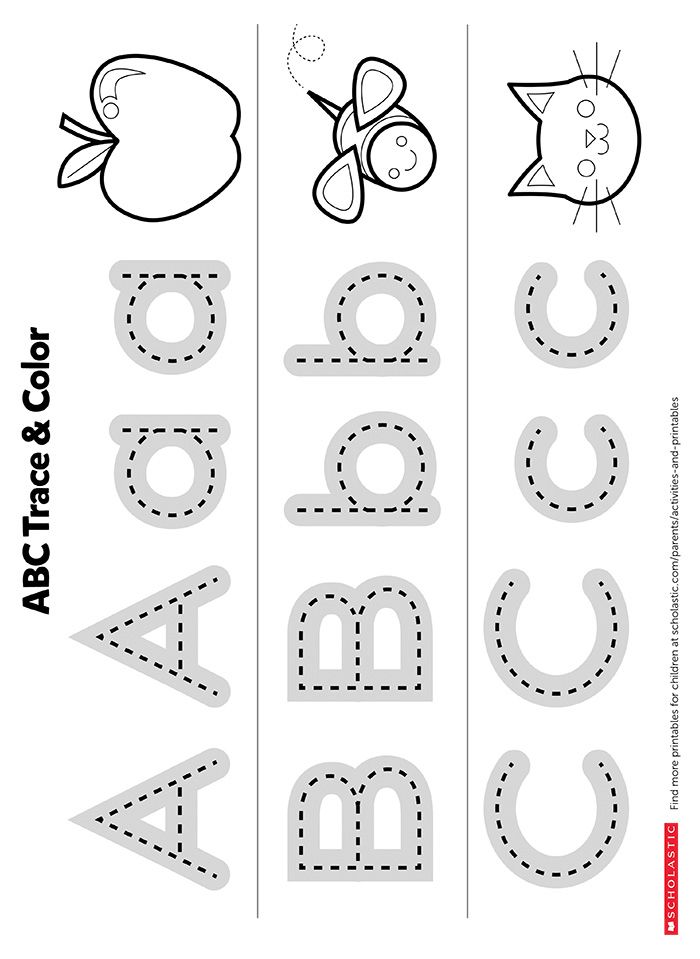 Sand Letter Search
Sand Letter SearchThis activity was a hit! Both kids continued to do this activity for a half-hour after they found the first round of letters!
You need kinetic sand and magnetic letters to do this activity.
- The link for magnetic letters above has uppercase, lowercase, and numbers in the container, which I thought was the best deal because you could do this activity for each of these.
Ask your kids to search through the container of sand to find letters. They will love it because the sand feels SO cool! Once they find a letter, they can find it on the below worksheet that I created for you.
*CLICK HERE TO GET YOUR FREE UPPER CASE LETTER SEARCH WORKSHEET!*
#4. Begin With Uppercase Letters
I have noticed that almost all alphabet toys, learning videos, and books use uppercase letters.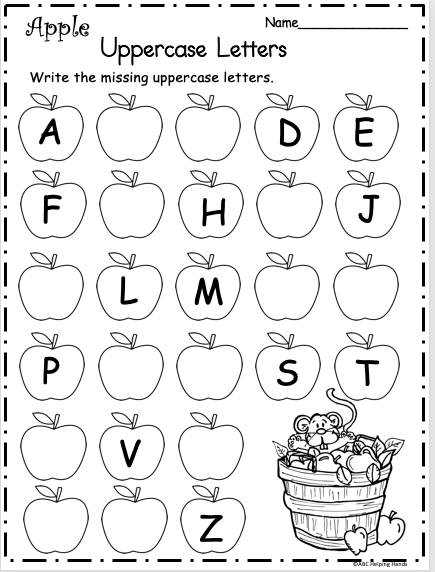
Because of this, starting with uppercase letters is the best way to teach your child the alphabet!
Make sure before moving onto lower case letters that your child knows each uppercase letter. I promise it’ll make it easier for them to learn!
We have these uppercase and lowercase learning locks that are so much fun to play with and work on fine motor skills!
Check Price - Amazon
It can be confusing for kids to hear that a lowercase letter is the same as an uppercase letter, especially if they look nothing alike. It’s essential to help them with this activity, so you can explain that they are the same letter!
#5. Read Letter Books
Each night, we have a routine to at least read 2-3 books with our kids before bedtime.
Reading is crucial to a child’s development.
I don’t know about you, but I feel like each time I am at the pediatrician, they always ask me if I am reading to my kids.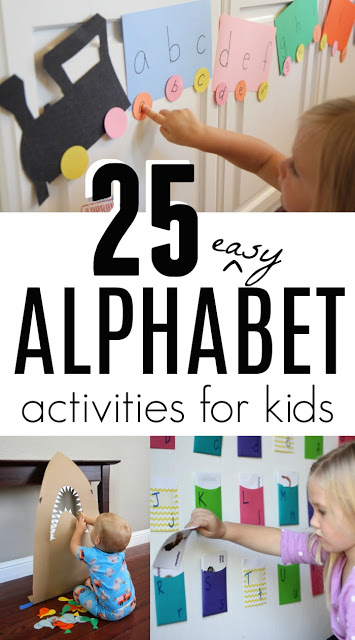 That shows me it’s pretty important!
That shows me it’s pretty important!
There are SO MANY books to choose from out there that focus on the alphabet and letter recognition. It’s challenging to make a choice!
But here is a list of my kid’s favorites.
A. My Best Ever: ABC Alphabet Book
B. Chicka Chicka Boom Boom
C. LMNO Peas
D. Sesame Street: Elmo’s Word Book
- This book is my favorite! It has flaps that kids can pick up to see pictures underneath, so it’s interactive, which makes it more memorable for them.
#6. Watch Educational Videos
Yes, I know you think I’m crazy for recommending screentime for toddlers!
We try to limit the amount of screen time that we have at our house.
But there are times when I have to change the laundry or clean up the giant mess created in the kitchen from painting.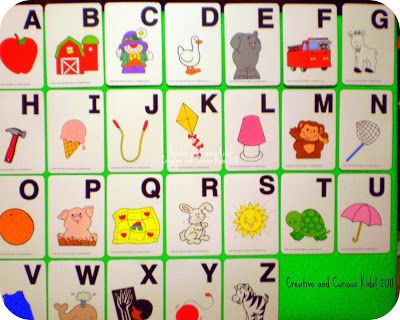 Utilizing an educational video for these times can be extremely helpful, and I don’t feel that guilty.
Utilizing an educational video for these times can be extremely helpful, and I don’t feel that guilty.
The current favorites at our house are Super Simple Songs, Bob the Train, or Little Baby Bum. These songs/shows are catchy, and they help aid in the learning process.
I’m not saying I allow my kids to watch hours of TV each day, but I do let them watch some.
#7. Focus On A Few Letters
Wow, I messed this step up when I was first teaching my kids the alphabet!
I started out showing them all the letters of the alphabet and trying to tell them all the letters at one time. I was wrong!
After realizing they weren’t picking up what I was trying to teach them, I tried focusing on only 2-3 letters a day.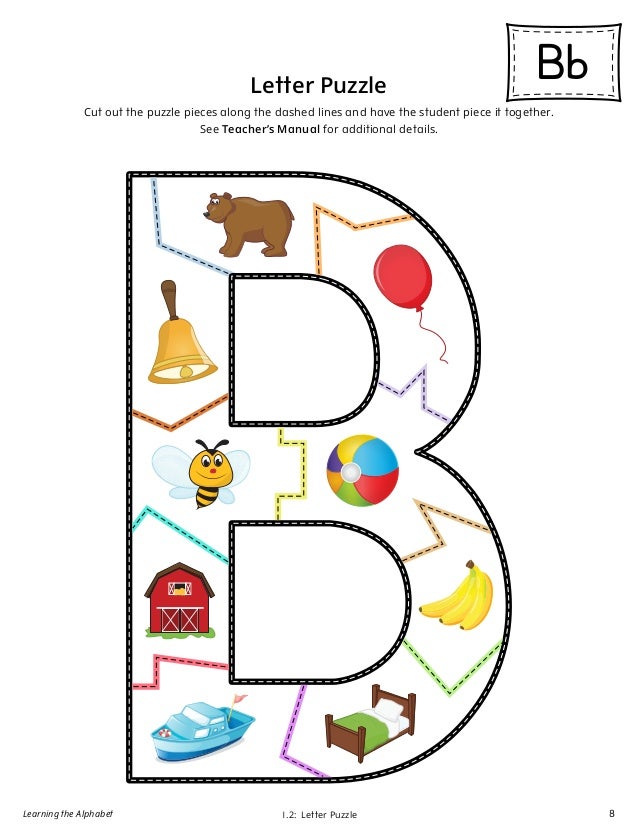
This way, it wasn’t so overwhelming.
If you use one of the alphabet toys that I mentioned above or you have your own that works for you, start by showing them A, B, and C.
For a few days, go over just those letters then add two more to that list. Always go over the letters you began with as well to keep that repetition going!
#8. Don’t Overdo It
Have you ever tried to sit down and teach your toddler something, and all they want to do is play with other toys?
This happens to all of us! Toddlers don’t have a very long attention span. There are times throughout the day that are better than others to try to teach them.
There will be times I attempt to work with both my son and daughter, and I can tell they are not interested whatsoever.
If you make them learn when they are not ready, they will not be eager to do it the next time. It’s better to wait until your kids are prepared to concentrate for a few minutes so you can get the most out of that time.
It’s better to wait until your kids are prepared to concentrate for a few minutes so you can get the most out of that time.
#9. Don’t Compare Your Child To Others.
Do you have friends on social media that brag about how their children are geniuses?
So many parents use social media as a place where they can brag how well their kids are doing at school and how smart they are!
It’s easy to compare what your child is doing with other children their age.
Every child has a unique learning process, and they will learn the information when they are ready!
There is no need to get frustrated or worried that the child is behind if they don’t know their alphabet at 16 months.
Take your time when you are teaching your child and stay positive with them! If you show them that you are frustrated, they will see your frustration and maybe not be as interested in learning.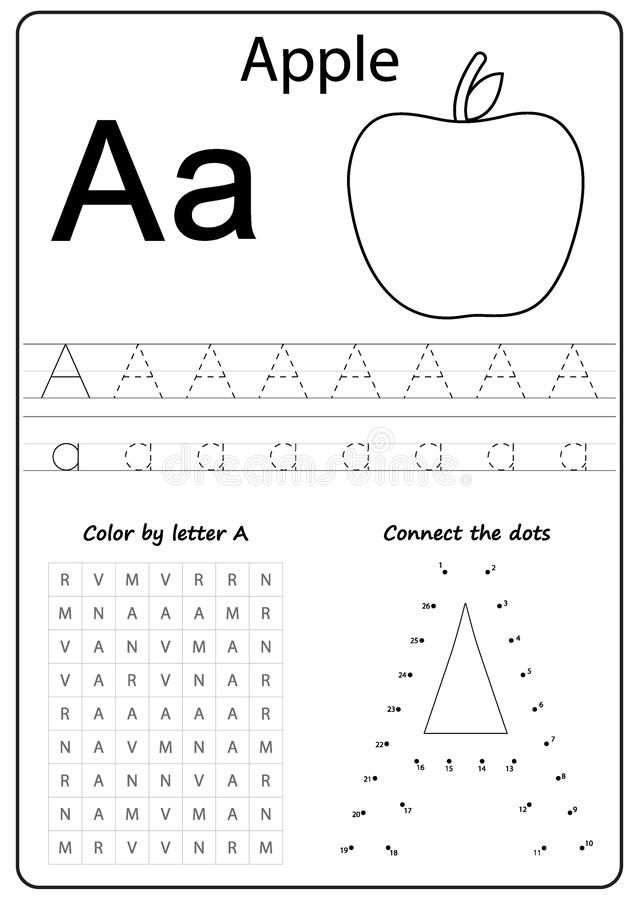
Final Thoughts and Conclusion
My most important tips for teaching the alphabet are repetition and don’t get frustrated! If you follow these 9 ways to teach your child the alphabet, you are off to a great start on your child’s education!
I would love to help you on your journey to teaching your child the alphabet!
If you have any great ideas that you would like to share that helped you teach the letters of the alphabet to your child, please share them with us!
Learning the alphabet: methods, exercises and games for children
The alphabet is the foundation of reading. Therefore, before you start reading and writing, teach your children the letters.
Children can start learning to read as early as preschool age. Parents and teachers need to teach their child how to pronounce sounds correctly in their native language. These are important prerequisites for learning letters and learning to read successfully.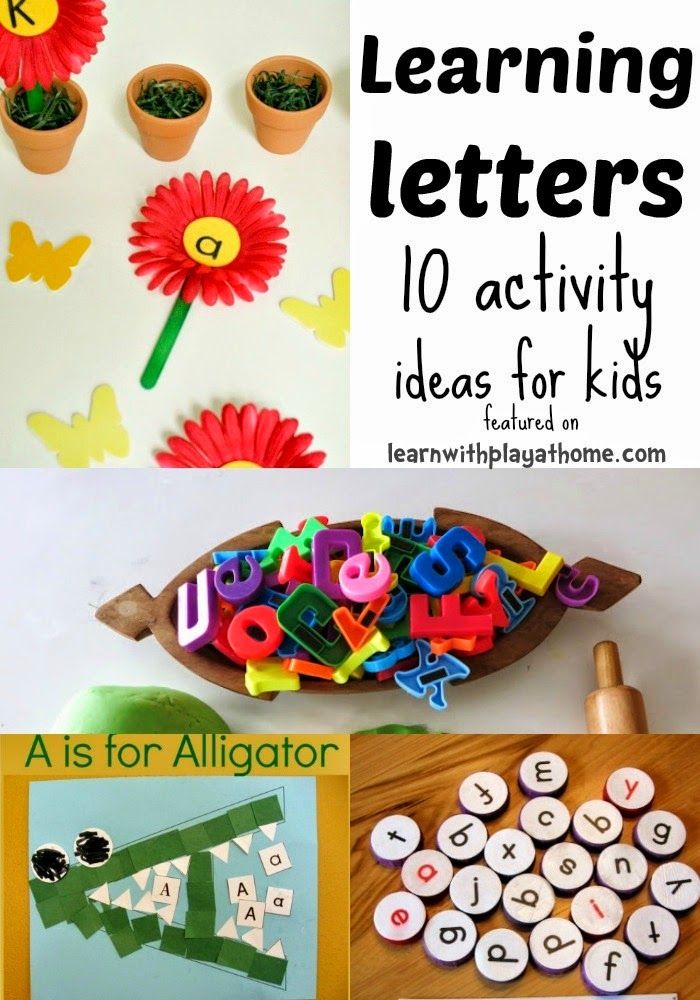 The educational process of preschool children is based on visual, acoustic and tactile exercises. The use of various channels of perception in the educational process increases its effectiveness and stimulates long-term memorization of letters. nine0003
The educational process of preschool children is based on visual, acoustic and tactile exercises. The use of various channels of perception in the educational process increases its effectiveness and stimulates long-term memorization of letters. nine0003
Learning the alphabet: introducing the child to the alphabet.
To master reading, a child must learn and recognize not only the graphic form of letters, but also be able to compare them with their corresponding sounds. This means that the child must be able to write letters and pronounce them. When the child learns to correctly pronounce all the sounds in his native language and distinguish letters by visual form, go directly to reading. As a rule, at the age of 5-6 years, most children no longer experience difficulties in this. nine0003
See also: Reading and bilingualism. Bilingualism in children
From the age of 5 to 6, children begin to understand that there is a lot of information encoded in language using letters.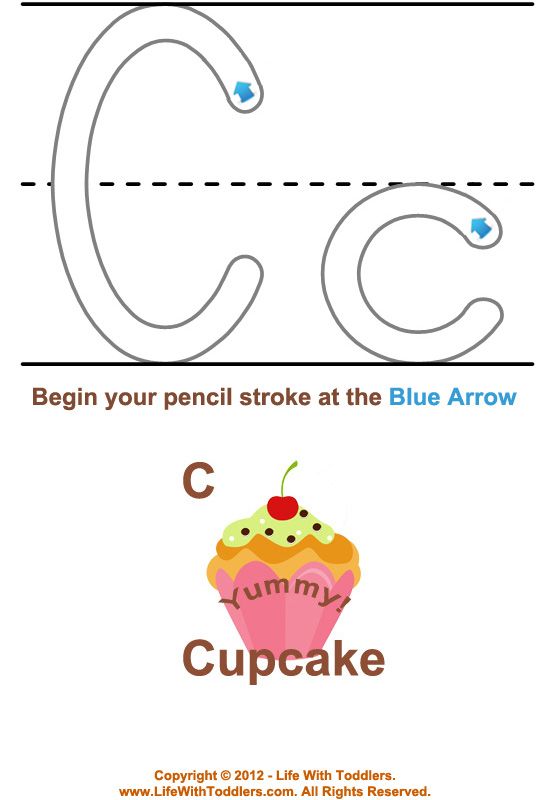 Thus, they are interested in learning to read by then, as they are naturally curious.
Thus, they are interested in learning to read by then, as they are naturally curious.
Of course, babies can learn and memorize individual letters quite early. However, their interest, mostly spontaneous, is directed to individual words and letters. Here it is important to gently motivate the child by encouraging him to learn through games and a comfortable environment. However, too much pressure can lead to stress, causing little ones to lose any motivation to learn letters. nine0003
Alphabet learning games
The first rule of learning the alphabet: learn the letters one by one!
Don't forget, each letter is made up of visually similar elements. If you try to teach a child several letters at a time, he may become confused. Learn the letters one by one. One lesson - one letter.
Second rule of learning the alphabet: take your time!
Give your child enough time for each letter. Plan 1-2 lessons for each new letter. Organize the lesson in a form that is interesting for the child with the help of games. nine0003
Organize the lesson in a form that is interesting for the child with the help of games. nine0003
Tactile method: from studying letters to reading
The child sees something abstract in a letter. Chains of associations will help in learning letters. Associating each letter with something specific or familiar helps the child fix it in his memory.
1. Make a letter out of plasticine
Let's memorize what a letter looks like and develop fine motor skills.
We will need: plasticine (should be elastic), modeling board and a disposable plastic knife. nine0003
Together with your child, roll out 8 approximately identical sausages from plasticine. 2 - divide in half, 2 - divide into 3 parts. From the remaining 4, make rings by blinding their edges and cut 2 of them in half, creating semicircles. Thus, you should get a set of elements to compose any letters of the alphabet. Show the child a couple of examples and ask them to repeat, collecting previously passed letters.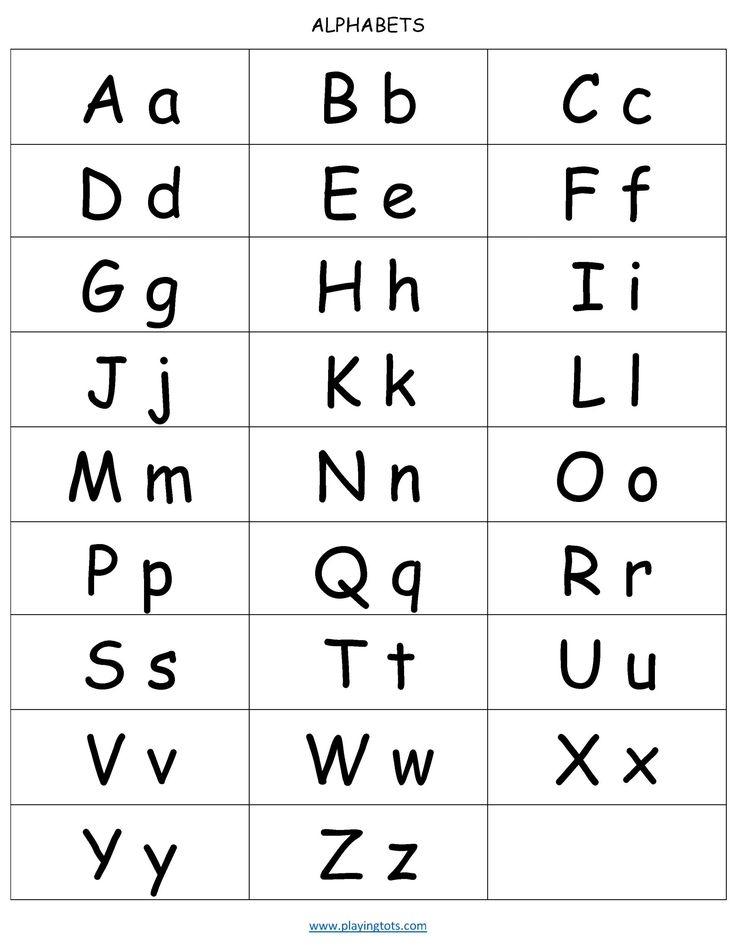
2. Magic wands
Let's memorize letters, learn how to make letters from sticks, learn how to transform letters. nine0003
We need: a set of counting sticks. If not, you can replace with matches or toothpicks.
The easiest way is to lay out letters from sticks according to a pattern or without a pattern (according to the idea). When the child learns to lay out all the letters, you can complicate the task by laying out objects familiar to the child from them, and then ask them to change them, for example, make a figure resembling a door out of sticks, and then ask the child to remove 2 sticks to make the letter P.
3. Tactile letters
Memorize letters and develop fine motor skills
We will need: sandpaper, velvet paper, scissors.
Cut out letters from sandpaper or velvet paper. The child will have to close his eyes to identify the letter by touch.
4. Draw a letter on the semolina
Memorize letters, develop fine motor skills
We will need: bright dish tray, semolina
Pour sand or semolina in a thin layer on the tray.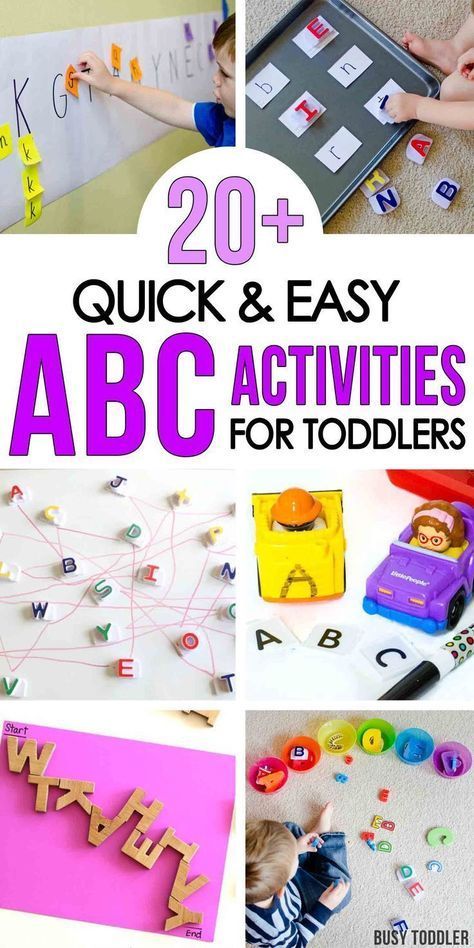 Set an example for your child, show how to write letters on the croup with a finger or a stick. Ask him to write next to the letter, the same as you wrote, to write a letter more or less than yours, to add an unfinished letter, or to erase the extra detail of the "wrong" letter. Children will like this game, just shake the tray a little, and the mistake or inaccuracy made disappears! nine0003
Set an example for your child, show how to write letters on the croup with a finger or a stick. Ask him to write next to the letter, the same as you wrote, to write a letter more or less than yours, to add an unfinished letter, or to erase the extra detail of the "wrong" letter. Children will like this game, just shake the tray a little, and the mistake or inaccuracy made disappears! nine0003
5. Mirror letter
Memorize letters and train attention
We will need: cardboard, pencil and scissors
Prepare identical cards cards, 2 pieces for each letter. Write 1 letter on each card. Write the letters in mirror image and correctly. Lay out cards with the same letter in front of the child and offer to choose the correct one.
6. Memory test game
Train memory
We will need: scissors, cardboard and a pencil
The game "Memory Test" will challenge even older children. Write each capital letter on one card and lowercase letter on the other card.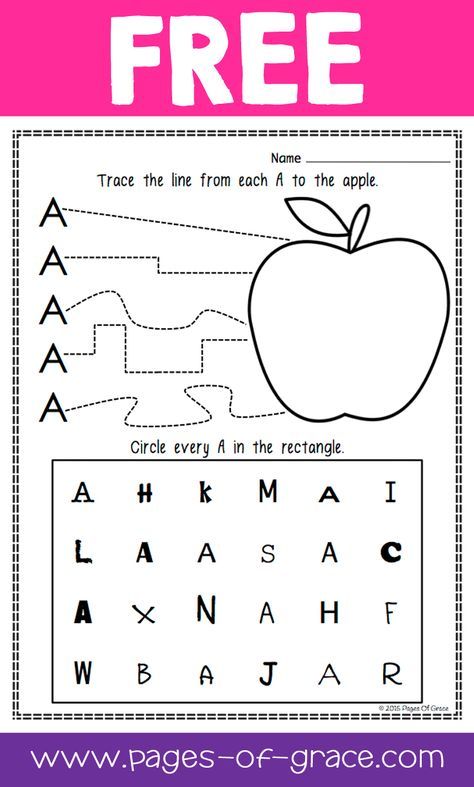 Turn over all the cards and place them on the table. Ask your child to match uppercase and lowercase letters. You can complicate and add a dictionary element. Have the children match the letter of the alphabet with the picture that starts with that letter.
Turn over all the cards and place them on the table. Ask your child to match uppercase and lowercase letters. You can complicate and add a dictionary element. Have the children match the letter of the alphabet with the picture that starts with that letter.
7. Bean bag
Memory training
We will need: a bag of beans or other bulk material, a tablecloth or a large piece of paper.
If you want to warm up a bit while you study the letters, play a game of Beanbag. Write the alphabet randomly on a large piece of paper. Give the children a bean bag and ask them to put it on paper. The child must name a word that begins with the letter on which the bag fell. If a student is stuck, help him.
Ask the child to check the chosen letter with letters from the alphabet. Be sure to ask the name of the letter. The exercise will help children learn to distinguish visually similar letters and avoid mistakes when writing them in the future. nine0003
Drawing, coloring, cutting letters out of paper and gluing them together develop fine motor skills in children.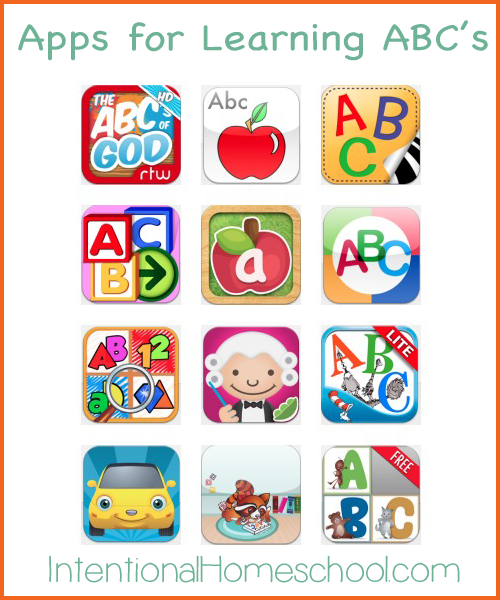 Self-made flash cards with letters facilitate memory and associative thinking, creating the basis for tactile games. You can make postcards alone or with your child. Letters can be cut out of paper of various textures and pasted onto cards made of cardboard or paper. Then you can ask the child to pick up letters from 2-3 cards with their eyes closed.
Self-made flash cards with letters facilitate memory and associative thinking, creating the basis for tactile games. You can make postcards alone or with your child. Letters can be cut out of paper of various textures and pasted onto cards made of cardboard or paper. Then you can ask the child to pick up letters from 2-3 cards with their eyes closed.
Literacy begins with learning the letters of the alphabet. Combine different perceptual styles. The alphabet learning games described above help children to learn letters at different levels. Moreover, fine motor skills play a crucial role in the formation of systematic connections in the mind of the child and create the basis for the development of reading and writing. nine0003
5 ways to learn the alphabet quickly and easily with a child aged 3-6 — Somersault
Before you learn the alphabet with your child, it is important to understand what you are not going to do. Namely, learning to read. This is a more complex skill, so it is worth putting it off until the time when the child gets acquainted with all the letters and will confidently recognize them and write on their own.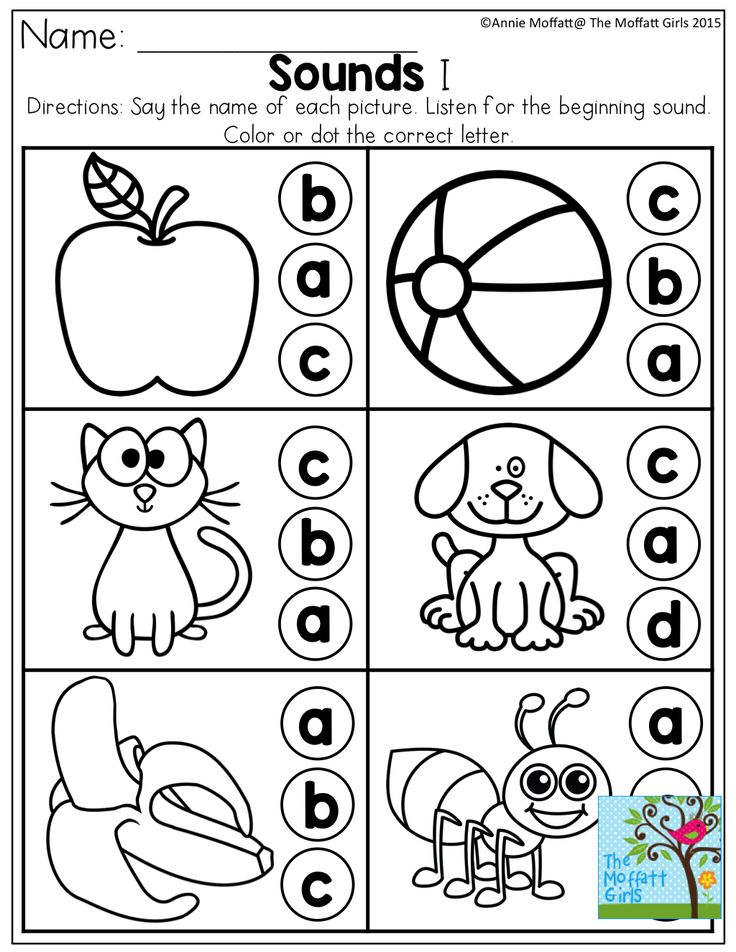 Until then, put off the alphabet and reading by syllables.
Until then, put off the alphabet and reading by syllables.
In this article, we have put together the basic principles to quickly learn the Russian alphabet with a 3-6 year old child in a playful way. For all games with letters, you can use plasticine, paints and any improvised means or magnetic letters - they will easily attract the attention of the child.
Contents:
- Learn the Alphabet Easily: Basic Principles
- 5 ways to learn the alphabet with your child
- From alphabet to reading
How to Learn the Alphabet Easily: Basic Principles
Each child can find an easy way to learn the alphabet that suits them best, but there are basic principles that are important for all children. If you do not follow them, study will turn into drill and the child is unlikely to ever love to read. Here are a few such principles on how to properly learn the alphabet for a child. nine0003
nine0003
- Learn sounds first, not letters . At the first stage of learning, it does not matter how the letters in the alphabet are called correctly. Now only sounds are important for the child - "d", and not the letter "De". The names of the letters will only confuse the child, who first needs to learn to recognize the shape of the letters and their sound.
- Not learning the alphabet in the correct sequence . Until a child goes to school, it is of no use to him to know how the letters are arranged in the alphabet. This information will only distract him from what is really important: how the letters look and sound. The sequence of the alphabet can be learned later or even at school, where this knowledge will be tested by the teacher. nine0132
- Do not turn learning into a lesson . Learning from call to call is difficult even for children at school, let alone a baby. Therefore, all learning should take place in a playful way and not for long: 5-7 minutes a day to get acquainted with the letters will be enough.
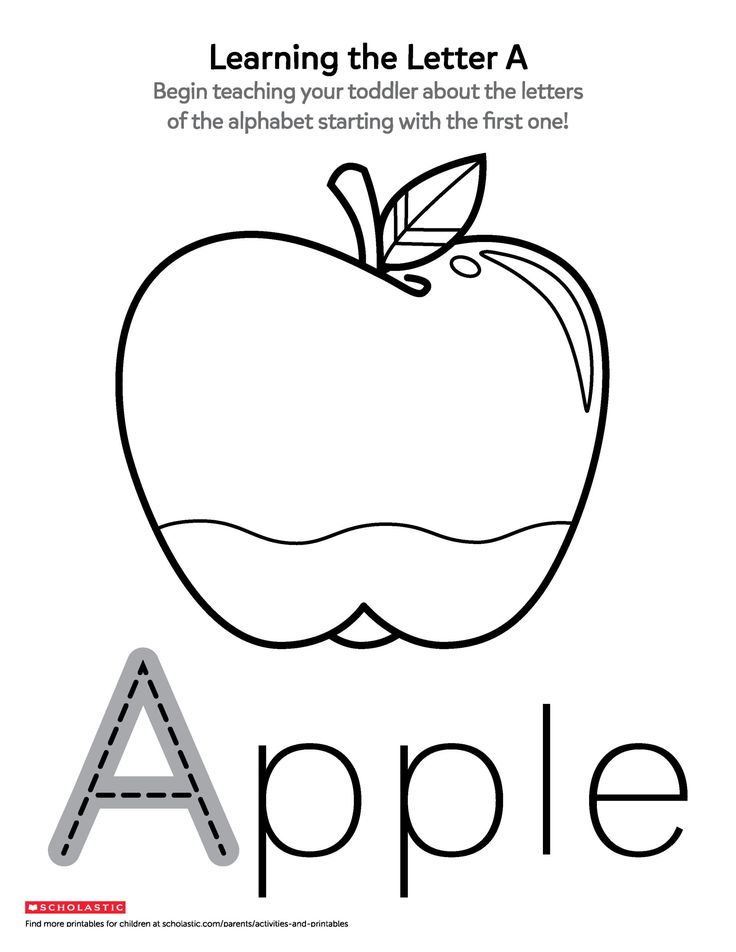 Gradually, this time can be increased, especially if the child likes the proposed games with letters.
Gradually, this time can be increased, especially if the child likes the proposed games with letters. - Use material objects . At the age of 3-6 years, the child learns the world by touch and taste. It is difficult for him to work with abstract letters spoken aloud. Therefore, it is better to stock up on plasticine and paints and create letters that are more understandable to the child and can be touched. Such a game for children will allow the child to learn the letters of the alphabet and he will recognize them in different forms regardless of what they are made of. nine0132
- First vowels, then consonants . Vowel sounds are easier to pronounce, so it's worth starting with them.
The main thing is not to force anyone. If you see that the child is inquisitive, enjoys exploring the world and is ready to learn, you can move on to learning letters and the alphabet. So the child will be happy to learn the alphabet in a playful way and gradually learn to read.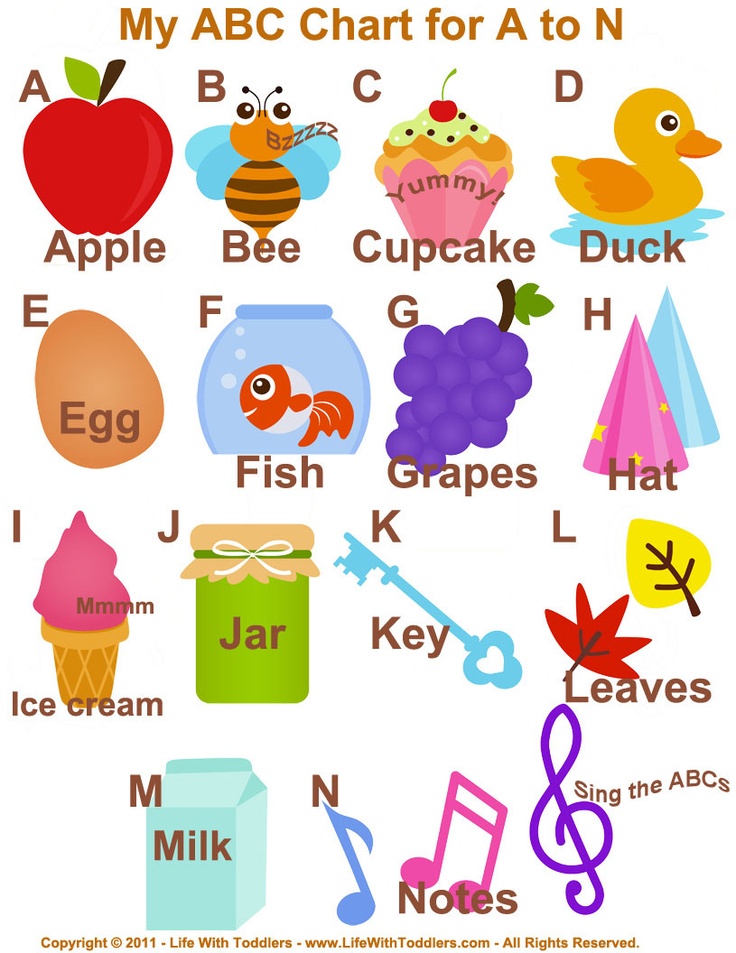 So that the game is not abstract, you can use the magnetic letters TUMBLING.
So that the game is not abstract, you can use the magnetic letters TUMBLING.
5 ways to learn the alphabet with your child
1. Use an interesting topic to study
Use the child's interest to spur his motivation to learn. For example, if your kid is crazy about cars, let them be the topic in which you learn the alphabet. Use any words related to cars:
"A" - bus
"B" - trunk
"C" - driver, etc.
You can show cars and their parts, draw or sculpt from plasticine. It is important that the child's focus shifts from learning to doing what they love. Additionally, the method will help expand vocabulary and knowledge about the world. nine0003
2. Cross out a letter of the alphabet in the list
Fill in a small square with arbitrary letters. The task is to cross out only the letter that you are studying. This will help the child focus on one letter and not get distracted by the ones he doesn't remember or don't know.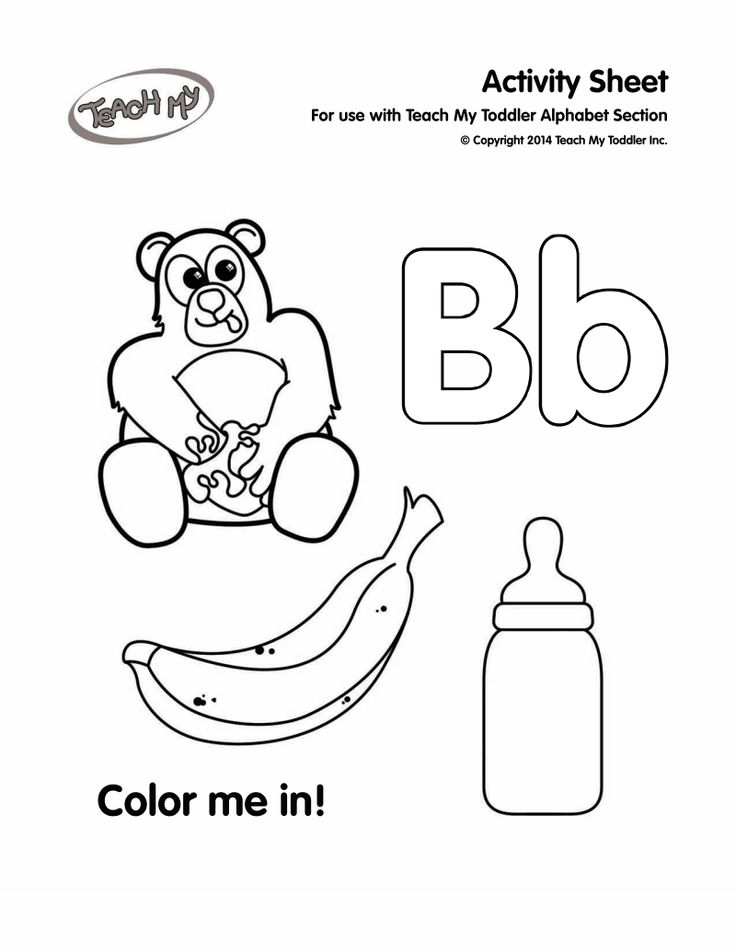
3. Pulling the letters of the alphabet out of the pouch
Magnetic letters , which are soft to the touch, are perfect for this method. Put the letters in a bag and give the child the task, without looking, to pull out only the letter that you thought of. Let there not be too many letters in the bag, otherwise the child will get confused. 6-7 pieces will be enough. To start, use letters that are very different in shape, such as "O" and "M". Gradually, the complexity can be increased and searched among similar letters, for example, "K" and "X". Don't forget to praise and encourage your child. You can alternate the learning process with desktops. nine0003
4. Recognize letters of the alphabet by ear
You pronounce a word, and if it contains a hidden letter, the child claps his hands.
With this game for kids, you can learn individual letters or the entire alphabet. For example, you name a word, and the child inserts its first letter into the insert frame.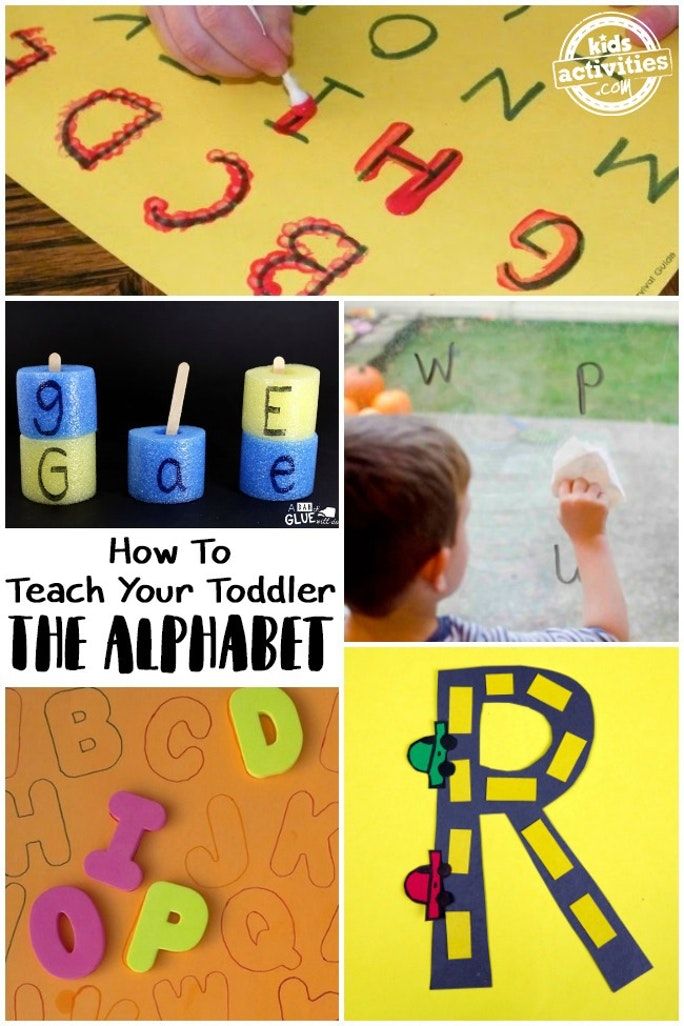 To stimulate your child's interest, you can use only words from his favorite topic, for example, the names of animals.
To stimulate your child's interest, you can use only words from his favorite topic, for example, the names of animals.
5. Guess words starting with the first letter
You choose one letter and think of a word that starts with that letter. For example, the letter "Z":
- What is this animal with big ears and loves carrots?
- Hare!
This game form is again suitable for learning individual letters or the entire alphabet. If you learn only one letter, the child gets used to quickly recognizing it in different words. And if you give words with different letters, the child as a whole learns to understand with which letter they begin. With the study of the account and the English language will also help TUMBLING.
From the alphabet to reading
When a child learns the Russian alphabet, confidently recognizes all the letters in different words and can draw or mold them on his own, it is worth moving on to reading. Because you need to learn the alphabet just so that the child can read.

